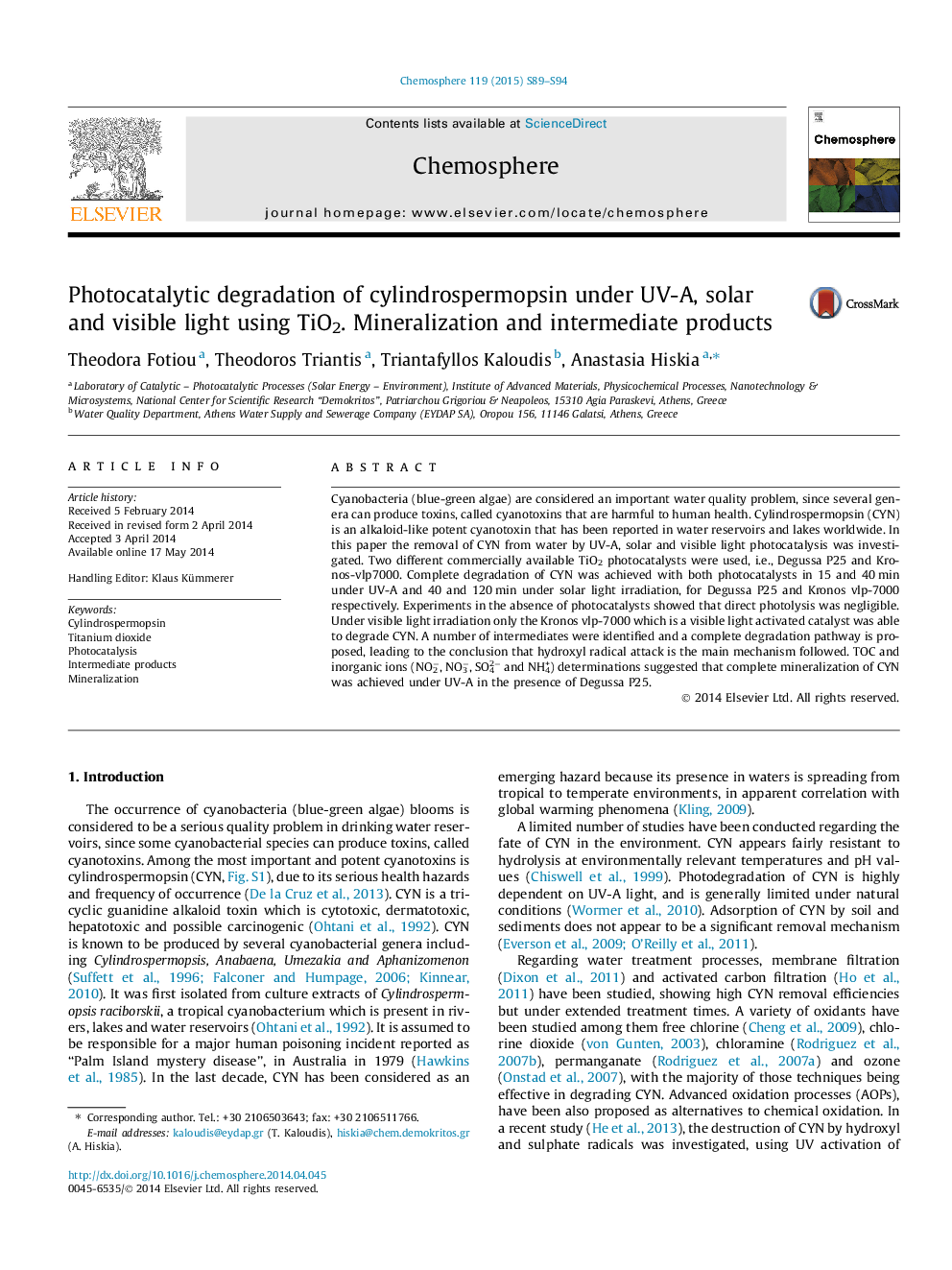| کد مقاله | کد نشریه | سال انتشار | مقاله انگلیسی | نسخه تمام متن |
|---|---|---|---|---|
| 4408708 | 1307430 | 2015 | 6 صفحه PDF | دانلود رایگان |

Cyanobacteria (blue-green algae) are considered an important water quality problem, since several genera can produce toxins, called cyanotoxins that are harmful to human health. Cylindrospermopsin (CYN) is an alkaloid-like potent cyanotoxin that has been reported in water reservoirs and lakes worldwide. In this paper the removal of CYN from water by UV-A, solar and visible light photocatalysis was investigated. Two different commercially available TiO2 photocatalysts were used, i.e., Degussa P25 and Kronos-vlp7000. Complete degradation of CYN was achieved with both photocatalysts in 15 and 40 min under UV-A and 40 and 120 min under solar light irradiation, for Degussa P25 and Kronos vlp-7000 respectively. Experiments in the absence of photocatalysts showed that direct photolysis was negligible. Under visible light irradiation only the Kronos vlp-7000 which is a visible light activated catalyst was able to degrade CYN. A number of intermediates were identified and a complete degradation pathway is proposed, leading to the conclusion that hydroxyl radical attack is the main mechanism followed. TOC and inorganic ions (NO2−, NO3−, SO42− and NH4+) determinations suggested that complete mineralization of CYN was achieved under UV-A in the presence of Degussa P25.
Journal: Chemosphere - Volume 119, Supplement, January 2015, Pages S89–S94